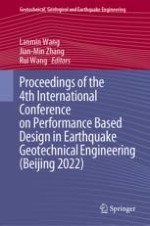2022 | OriginalPaper | Chapter
Laboratory Component of Next-Generation Liquefaction Project Database
Authors : Kenneth S. Hudson, Paolo Zimmaro, Kristin Ulmer, Brian Carlton, Armin Stuedlein, Amalesh Jana, Ali Dadashiserej, Scott J. Brandenberg, John Stamatakos, Steven L. Kramer, Jonathan P. Stewart
Publisher: Springer International Publishing
Activate our intelligent search to find suitable subject content or patents.
Select sections of text to find matching patents with Artificial Intelligence. powered by
Select sections of text to find additional relevant content using AI-assisted search. powered by
